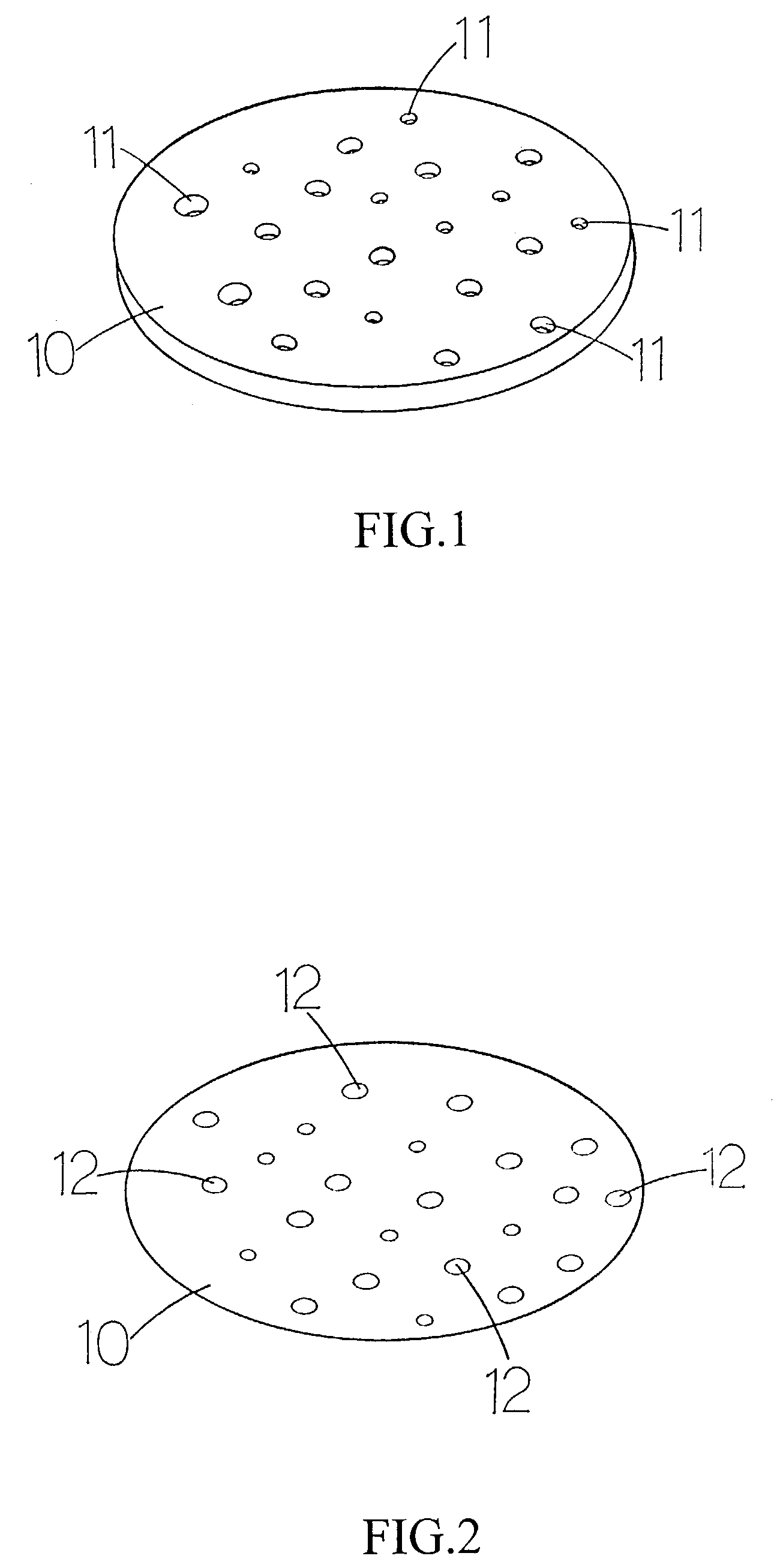Method of manufacturing lightweight ceramics
a lightweight ceramic and manufacturing technology, applied in the field of lightweight ceramic manufacturing, can solve the problems of narrowing the application range of ceramic bricks, unable to break through the technology of lowering the overall mass of ceramic bricks, and heavy weight of ceramic bricks so produced, so as to reduce the softening point of powdered glass materials
- Summary
- Abstract
- Description
- Claims
- Application Information
AI Technical Summary
Benefits of technology
Problems solved by technology
Method used
Image
Examples
Embodiment Construction
[0015]To make it easier for our examiner to understand the objective of the invention, its structure, innovative features, and performance, we use a preferred embodiment together with the attached drawings for the detailed description of the invention.
[0016]A method of manufacturing lightweight ceramics according to the present invention is used to manufacture the ceramic products 10 as shown in FIGS. 1 and 2, wherein the ceramic product 10 has a plurality of open pores densely distributed on its surface, and a plurality of close pores 12 densely distributed inside the ceramic product 10. The entire ceramic product 10 is formed by the close pores 12 and has the lightweight, insulating, refractory, and water resisting features.
[0017]FIGS. 3 and 4 show the whole manufacturing flow of a method of manufacturing lightweight ceramics, and the proportion of each raw material is given below:
a. If the powdered glass material is of the low-temperature type, then:
[0018]1. Powdered glass materi...
PUM
| Property | Measurement | Unit |
|---|---|---|
| temperature | aaaaa | aaaaa |
| temperature | aaaaa | aaaaa |
| temperature | aaaaa | aaaaa |
Abstract
Description
Claims
Application Information
 Login to View More
Login to View More - R&D
- Intellectual Property
- Life Sciences
- Materials
- Tech Scout
- Unparalleled Data Quality
- Higher Quality Content
- 60% Fewer Hallucinations
Browse by: Latest US Patents, China's latest patents, Technical Efficacy Thesaurus, Application Domain, Technology Topic, Popular Technical Reports.
© 2025 PatSnap. All rights reserved.Legal|Privacy policy|Modern Slavery Act Transparency Statement|Sitemap|About US| Contact US: help@patsnap.com



